By William J. McPeak
Battle helmets shaped to partially cover the face and adorned with various facial features are of ancient origin. From Egypt to Mexico, masks and helmets were used as funerary adornments to honor the dead and deter would-be grave robbers with their fearsome appearance. The progression of metal helmets reflected these features, with Greek and Roman styles passed on to western nations.
The Greeks, famous for their theater masks, developed several bronze helmet styles extending in the back to protect the neck. The Hoplite and Corinthian helmets were basically open-faced, with a narrow vertical and eye-shaped opening. The design feature of eye holes rather than a simple opening provided an additional intimidating feature, lending a ghostly element to their appearance.
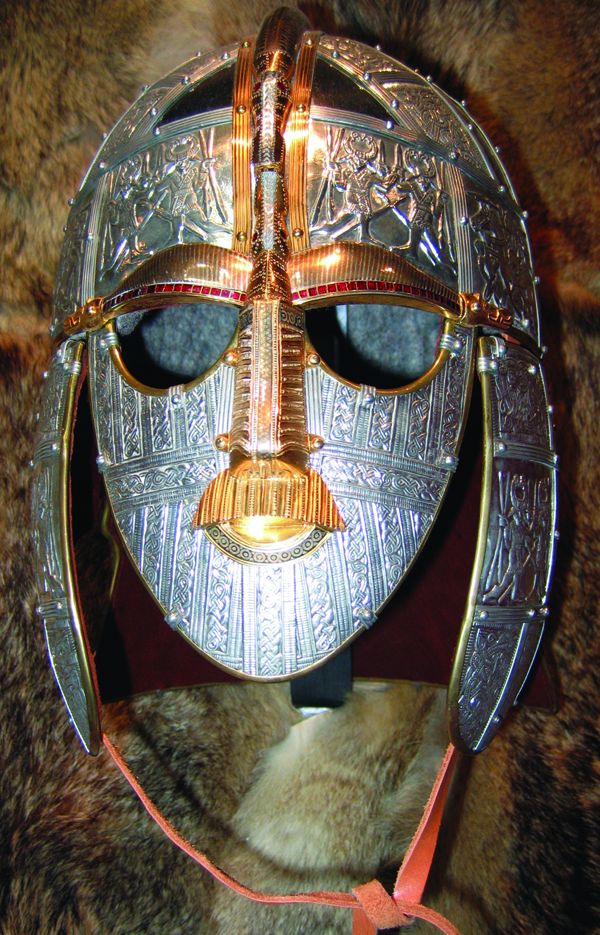
The Romans, also noted mask makers, were more practical, keeping their combat helmets open-faced. The Roman open-face helmet added cheek pieces rather than the extra weight of a one-helmet design. The basic Roman helmet prevalent in the 4th through 5th centuries was handed down to the barbarian peoples as a short conical skull with cheek pieces, sometimes with an extended neck guard and nasal piece. This became the spangenhelm that by the 7th century had mask-like additions used as funerary accoutrements, a fine example being the Anglo-Saxon burial helmet for Raelwald, king of East Anglia.
The additions reflected practical use. One feature was the eyeglass look known throughout northern Europe. This was the simple addition of a reinforced brow or eye-protecting goggles to the spangenhelm, protecting the upper face but also rendering an intimidating look best seen in the Viking goggle helmet (c. ad 900). Thereafter, the conical helmet became more elongated, with a pronounced nasal guard and often a neck guard that was typical in Norman helmets. A full helmet evolved that integrated a complete faceguard plate and became known as the medieval “helm” of the 12th century. These helmets ran the gamut from the woefully inefficient flat-top, barrel helm associated with the Crusades, with cross-shaped eye and mouth openings, to the more practical and closer fitting conical “sugarloaf” helmet.
Full helmets lightened up even more with the evolution of a visor to provide more air and less heat. The open-faced, ridged bascinet provided the foundation of such designs starting in the 14th century. A sliding plate visor for vision and air was used on some helmets. The typical visor was conical-shaped to accommodate the face and provide a glancing surface for a sword strike and pivoted on each side to move up and down. The visored bascinet helmet evolved by the mid-14th century into the hundsgugel, or dog’s head, helmet. Best known was the pig snout bascinet of 1370, whose visor pivoted above the brow and included pronounced eye, nose, and mouth openings that gave it an intimidating, grinning facial appearance popular into the early 15th century.
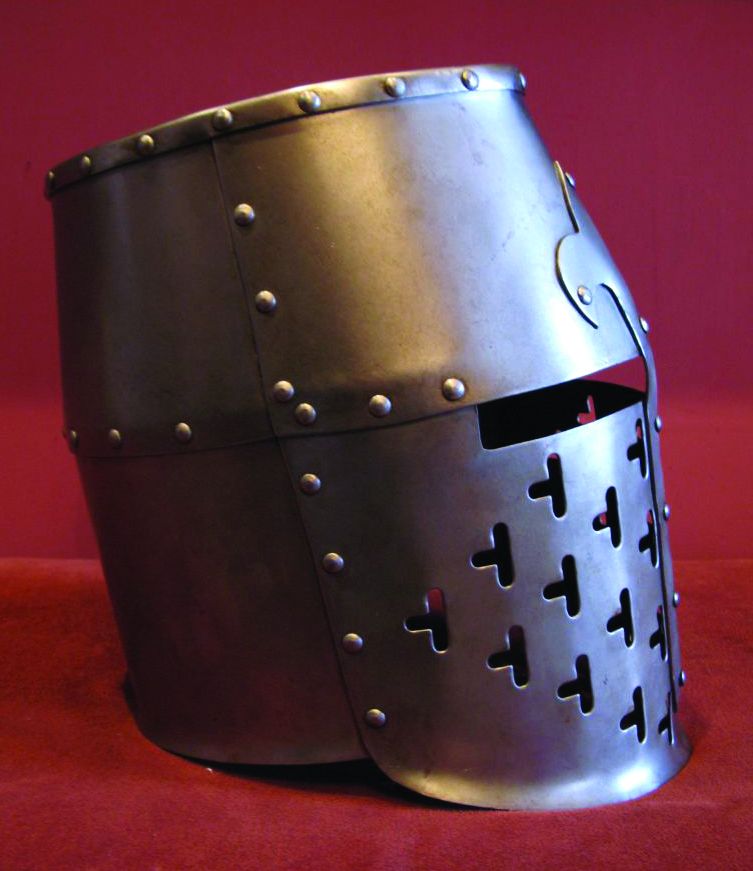
Continued development in open-helmet design led to the 15th-century barbute with a narrow Y- or T-shaped facial opening much like Greek helmets, with a widely flaring sallet pot helmet. From the barbute and the sallet evolved a particularly important new helmet, the burgonet, also called the burgundian headpiece or burgundian sallet. The burgonet harkened back to Roman legionary helmets with cheek pieces and a central ridge or crest (later burgonets had a progressively higher comb), but also included a horizontal visor. The burgonet sloped back to provide a neck guard.
Such advances would play a part in full helmet design in the 16th century. First and foremost, design had to mesh with the best means of keeping the full helmet styles attached to a soldier’s head, since one well-placed blow could bring up the visor, exposing the wearer’s face if not knocking the helmet off completely. Separate hinged jaw pieces were added at either side of the open bascinet and latched together at the chin, bringing the visor down over the wearer.
The “armet” style of full helmet appeared around the second half of the 15th century and continued in use along with the “close helmet” to the end of the century. The close helmet opened from front to back, pivoting the visor and the lower cheek and chin piece, or ventail, and the optional neck-protecting buffe or bevor visor from a single pin on either side of the skull. The two parts of the helmet were secured with single latches low on each side. The separate gorget collar was often attached as part of the front and back of the close helmet, later becoming a characteristic of other full helmets as jaw pieces.
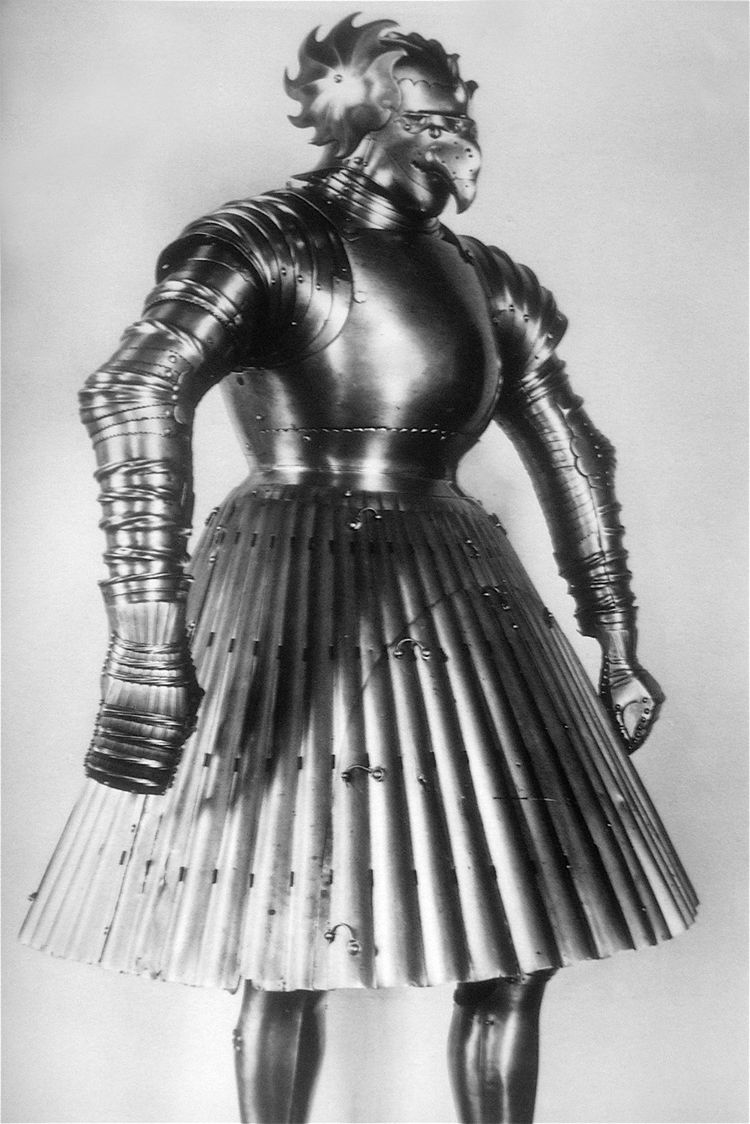
In the meantime, the visor had gone beyond the pig snout as the armet progressed and lighter helmets for foot tournaments evolved. The general result was the familiar “shovel bucket” or “coal scuttle” visor. By the beginning of the 16th century, the visor covered the full face with horizontal grooves or pleats like a bellows, affording more cuts for ventilation slits. The bellows visor was adaptable to all the helmets then in vogue.
The late 15th-century armorer’s art with its imitation of contemporary clothes reached inspired sophistication by the early 16th century. The most popular were the Maximilian or fluted armors, named for Emperor Maximilian I, under whose reign and patronage they first appeared about 1510. These designs showed the armorer’s fine craftsmanship in imitating the pleating of contemporary costumes—thus the name fluted. The bellows visor dovetailed nicely with the fluted armor styles.
German and Austrian patrons were particularly fond of fluted armor and the helmets that were worn with them, including barbutes, sallets, armets, and close helmets, all given the fluted treatment and usually worn with a bellows visor. Various “becked,” or pointed, visors were modified to have the general or actual appearance of animals—birds, dogs, monkeys, and humans. Eventually, fluted styling was overtaken by other fashion changes—cutting, slashing, and puffing—that armorers amazingly imitated in polished steel. In a time of great artistic display, such armor had the desired function of turning heads and became known as parade armor. Usually worn for special ceremonies, some parade armor was actually adapted for the field and for tournaments. Standout armorers of the time included Wilhelm von Worms, Conrad Seusenhofer, and Koloman Helmschmied.
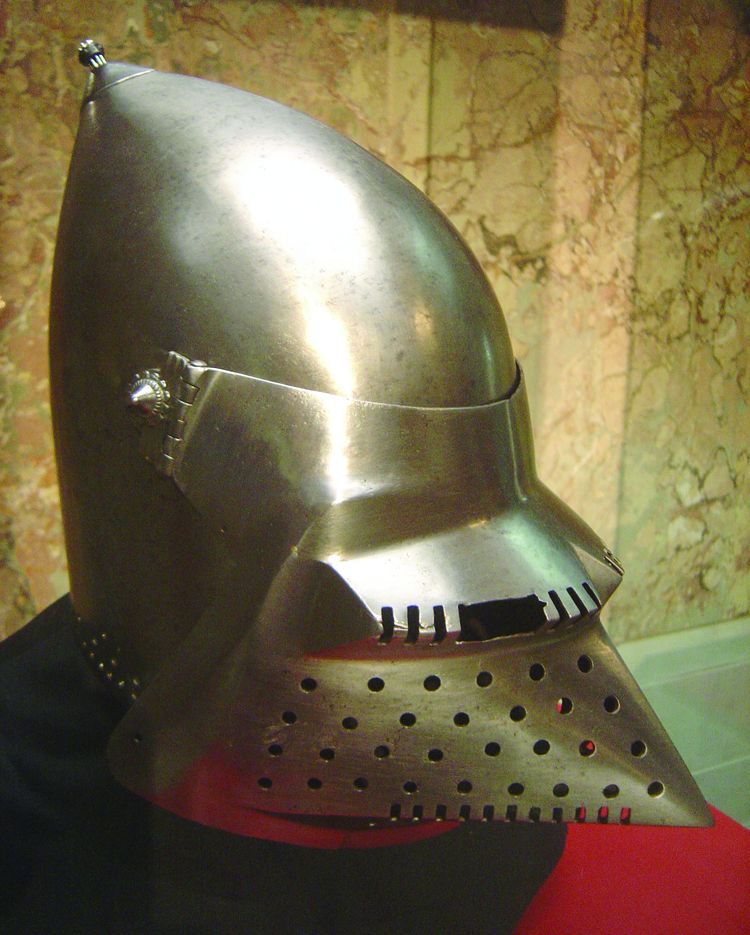
The burgonet became the do-all helmet for the 16th century, both styled as an open-face helmet and as a full helmet. Depending on the style, open-face varieties might have added cheek pieces or hinged cheek pieces that could be drawn together with attached buckles to cover the face. By mid-century, a full helmet look was achieved by strapping on the lower visor, or buffe, leaving a slight slit between the upper visor and the buffe. Various full burgonets came in combinations with the armet and close helmet.
The armet burgonet brought hinged cheek pieces together and latched them over the chin with the visor brought down. The close burgonet featured an optional movable fall visor and buffe with a single pin on either side of the skull. About the same time, the buffe also became a plate visor attached on either side of the helmet’s lower opening. The plate was pierced in a number of ways for sight and ventilation. The cheek pieces and buffe were combined as a visor, pivoted on either side. This arrangement was sometimes left open, with vertical or angled slits as part of the upper fall and brought down over the open frame of the visor to allow maximum sight and ventilation. This became known as the barred-visor burgonet. Another barred visor design simply inserted and riveted various faceplates, particularly a grill-like style, onto the buff visor frame—the typical heavy cavalry look.
The grill-barred burgonet (whether with armet or close openings) became a standard with heavy cavalry. Well into the 17th century, it was popular in the Netherlands, where it was called a Savoyard burgonet from the style originating in that principality. The heavier helmets used proportionately heavier, articulated three-quarter armor for shot resistance when the cavalry rode against armor-piercing infantry muskets. To offset thick frontal armor, seat and below-the-knee armor were discarded to equalize the armor’s overall weight. Heavy cavalry in Germany, the Netherlands, and Italy competed with infantry by adopting the wheel lock pistol and carbine to become pistoleers and carbineers, respectively, by the late 16th century. The lance was still used by some heavy cavalry units—particularly the French—but even these combatants also carried a pistol or two.
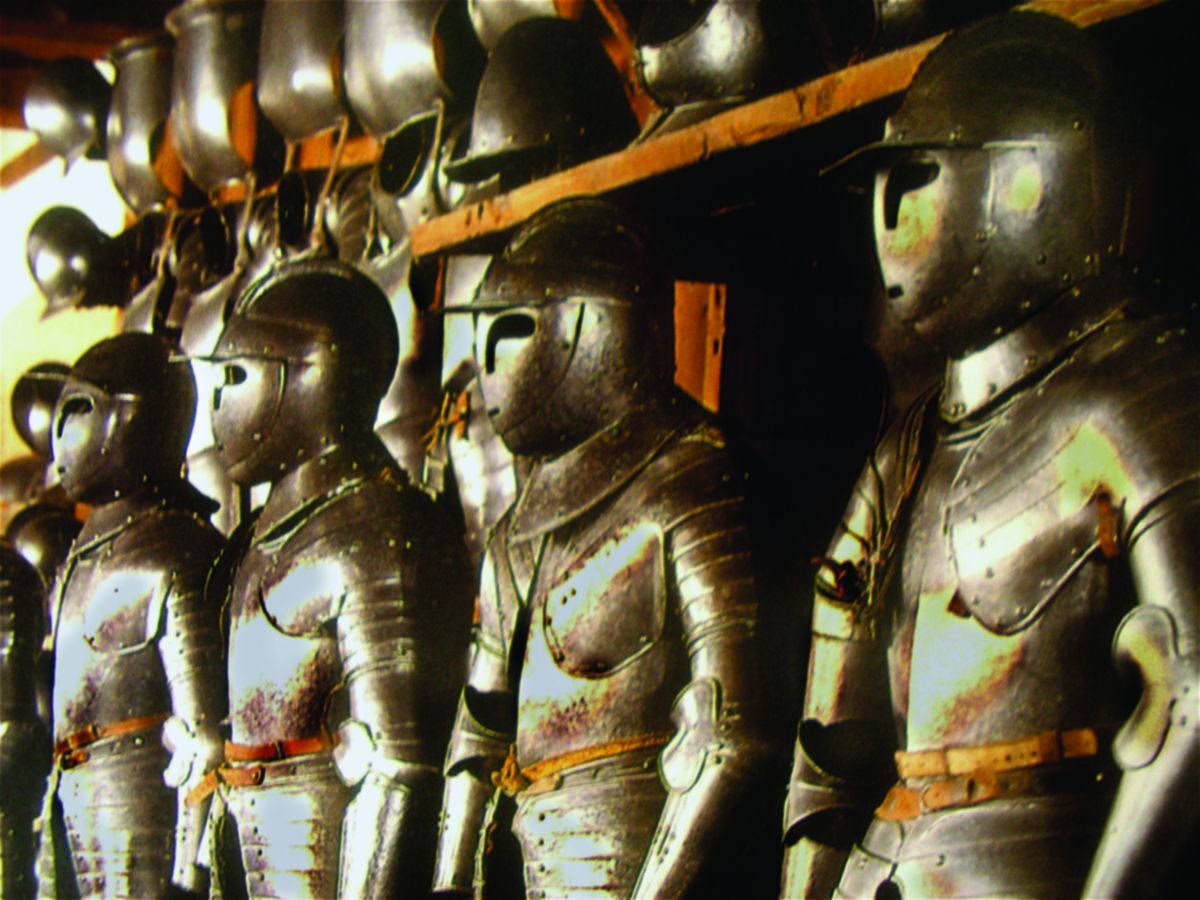
To protect against the withering volley fire of the matchlock musket, the buffe helmet evolved into a full-face heavy plate riveted to the open frame, with a minimum of sight and ventilation. Basic human facial features were achieved by beating out and chiseling geometric shapes of eyes, noses, and mouths. This harkened back to the earlier face helmets, and the intimidating effect prompted further experiments. By accenting the eyesight slit with arched openings and large, bug-eye circular holes, the look was disturbingly skull-like—consciously meant to frighten opponents.
By the late 16th century, expertly wrought burgonet face plates were quite detailed—with eyebrows, realistic noses with nostrils, grinning lips, and bared teeth in beaten relief to cover the cavalryman’s face. Whether to serve as camouflage in the dark, as a deterrent to rusting or to reduce costs in larger units with finished armor, the burgonet and three-quarter armor were often left in black and unpolished. In the long history of helmet-making, the burgonet achieved by far its most effective and sinister design with the todenkopf, or death’s head, helmet. The sheer psychological effect of a galloping, tight block of black-armored horsemen was intimidating to say the least.
Aside from the fury of a pitched battle with gunpowder-propelled lead flying everywhere, another combat scenario required heavy armor—siege work. One of the most popular targets for gunfire during a siege was the military engineer who oversaw sapping and mining. Sapping (digging a trench to advance closer toward the enemy’s lines or fortifications) and mining (digging a tunnel with the purpose of undermining or breeching an enemy’s fortifications) went back to ancient times. The man in charge of breeching the enemy’s defenses was vulnerable since he was constantly moving around in the line of fire directing operations. Because of that he had to wear thick armor, including a helmet.
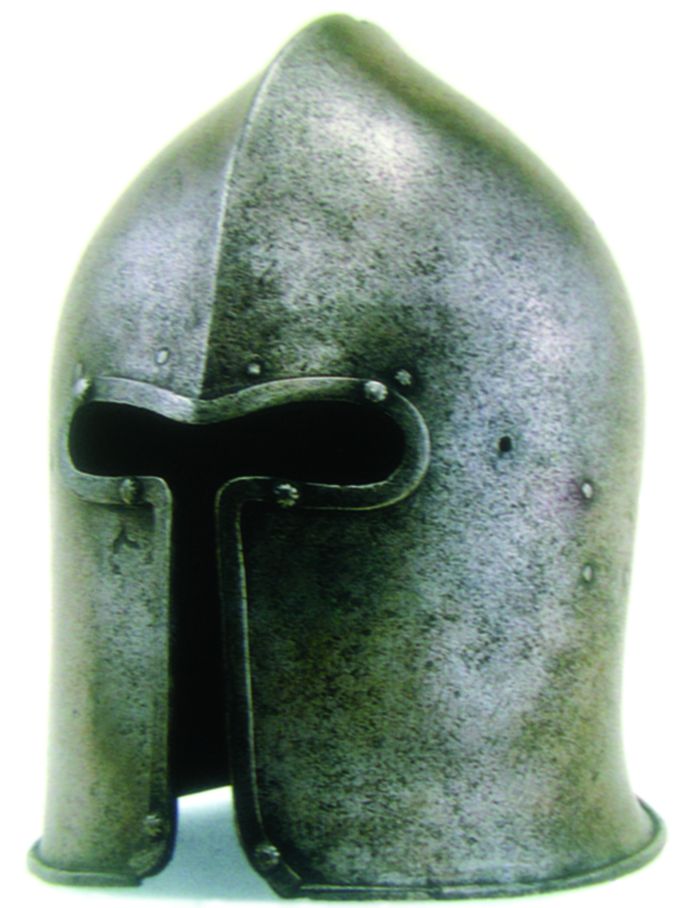
Early engineer’s helmets might be of various styles providing a good head cover. Sallets and other pot helmets were popular through the latter part of the 16th century, when the full burgonet became a particularly popular style for engineers. Full burgonets were layered with extra protection such as a barred visor with a heavy plate buff in the front. The engineer’s field helmet was a massive half-inch-thick piece of steel—20 pounds or more per helmet. The todenkopf style was especially useful, allowing the engineer to emerge from the shadowy trenches in moonlight or torchlight to frighten the very souls of enemy miners.
The helmet as protection is still in use, but it has become more utilitarian in modern times. Nevertheless, magnificent pieces of helmet art with designs from the best armorers and decorative artists survive today in such great museums as the Metropolitan Museum of Art in New York, the Tower of London Armory, the Musée de l’Armée in Paris, and by far the largest, the Landeszeughaus in Graz, Austria, which retains its functional look as an arsenal and armory. The Landeszeughaus has hundreds of helmets, including the largest collection of death’s head helmets anywhere, as well as many suits of various armors and thousands of arms—32,000 items in all.
The helmet remains the most easily recognizable piece of armor. At different times it has served not only a defensive deterrent but also an offensive one, a psychological weapon to frighten and unnerve opponents. In the late 16th and early 17th centuries, many soldiers thought the Devil and his minions stalked the battlefield as steel-shod demons, ready to carry them off to perdition at a moment’s notice. That was the intention.
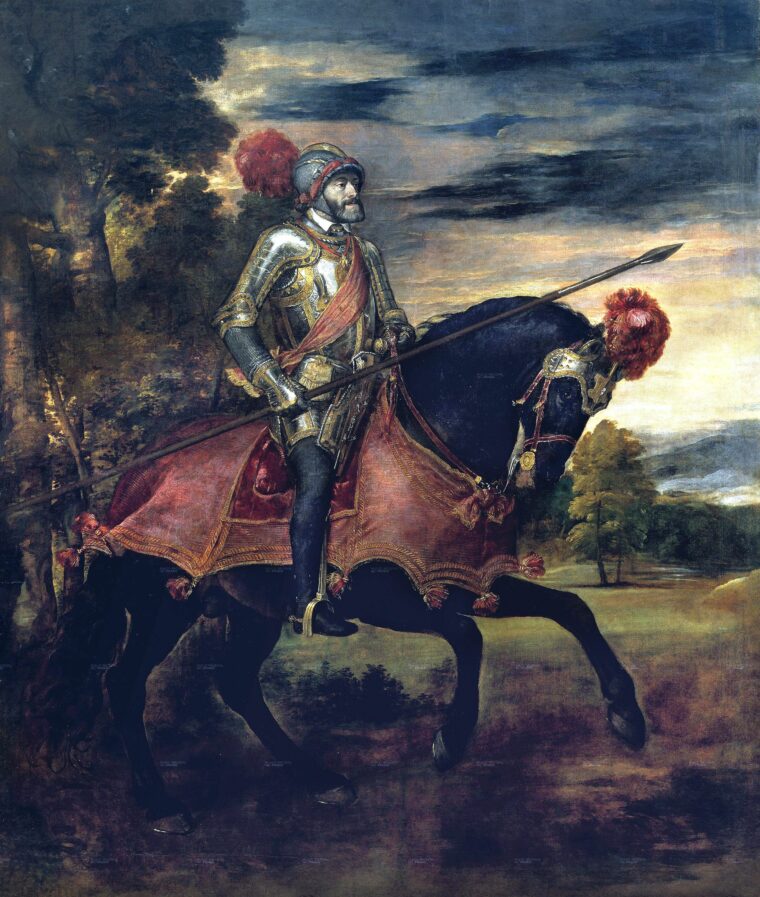
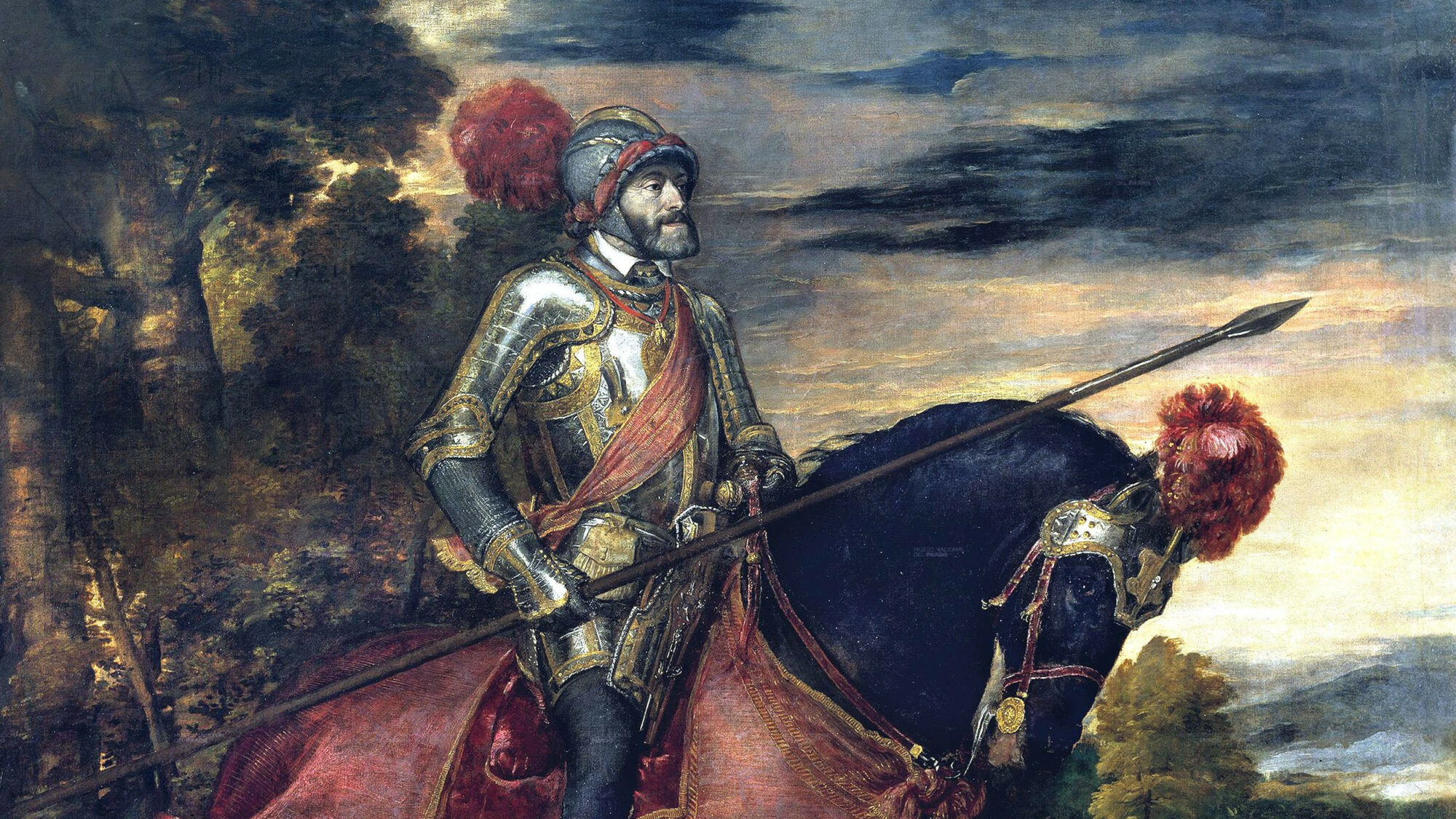
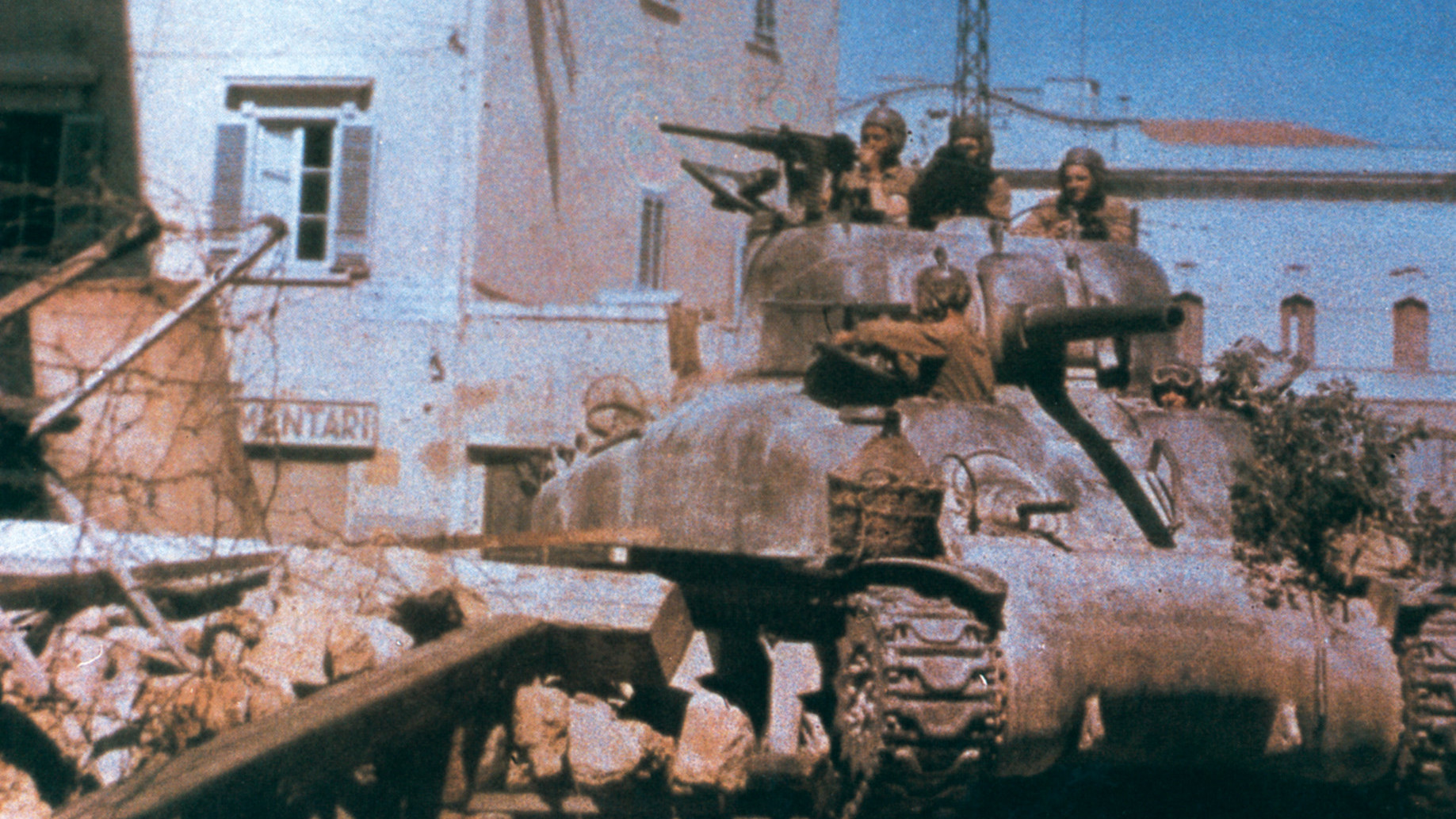
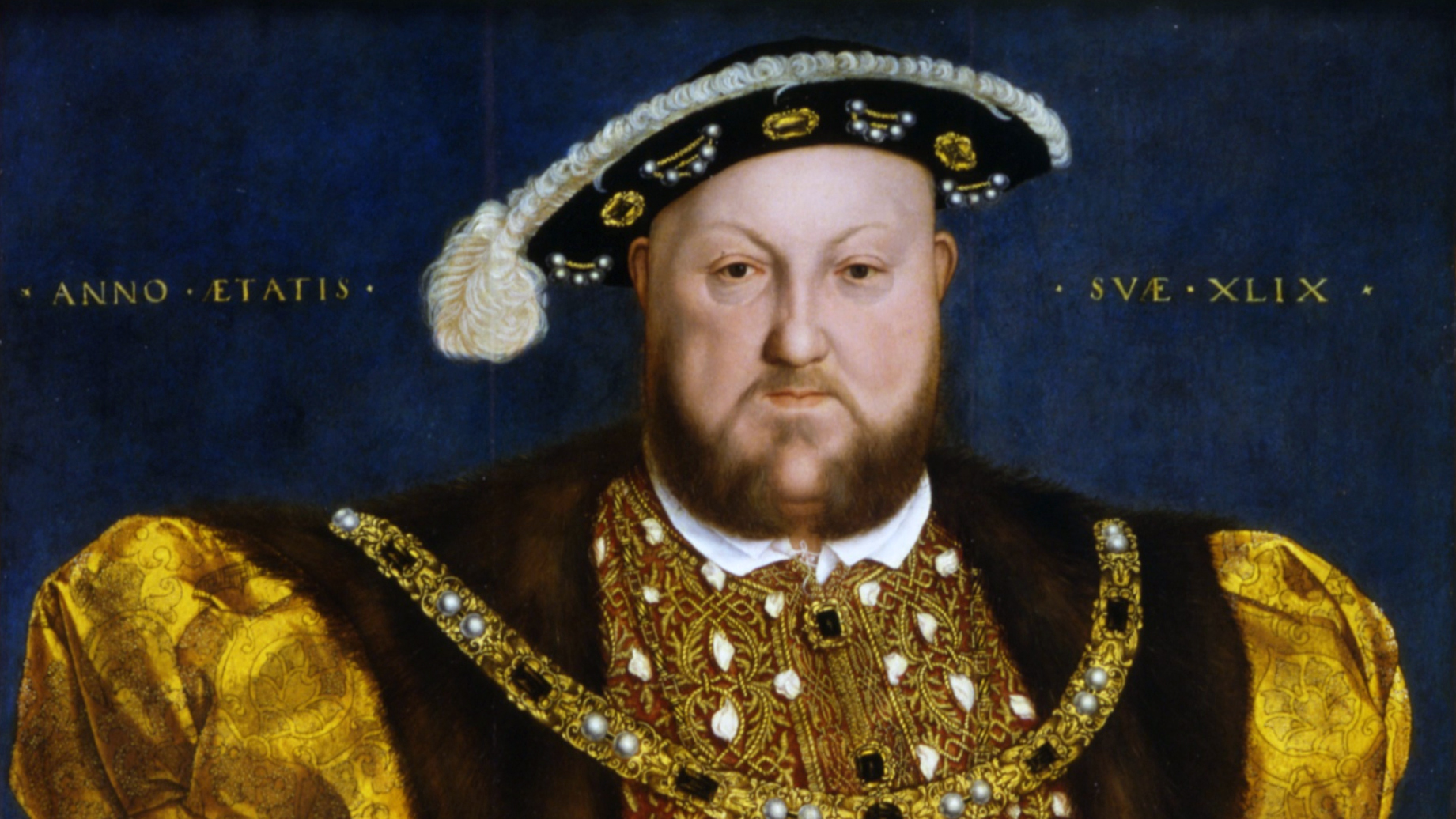
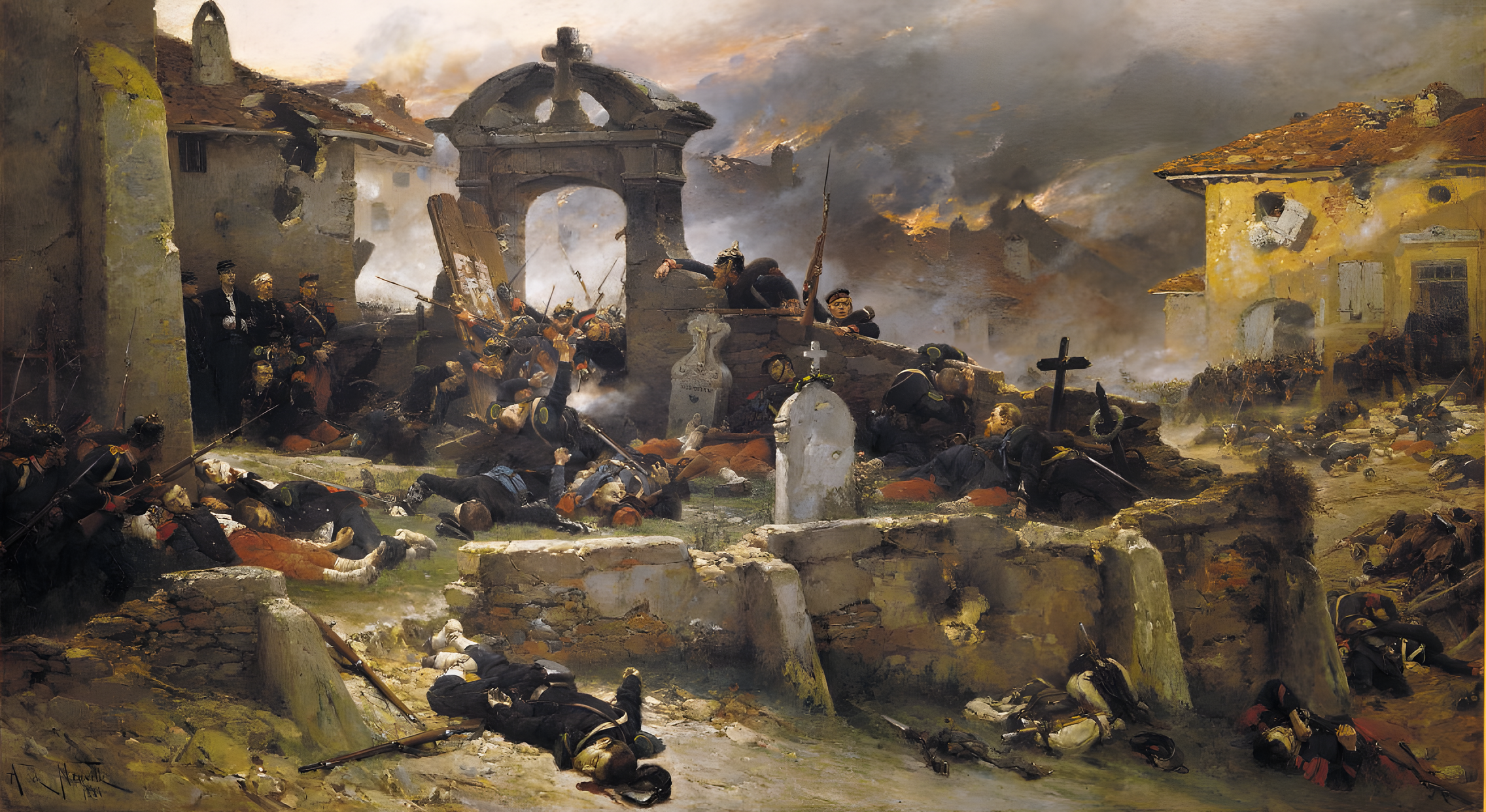


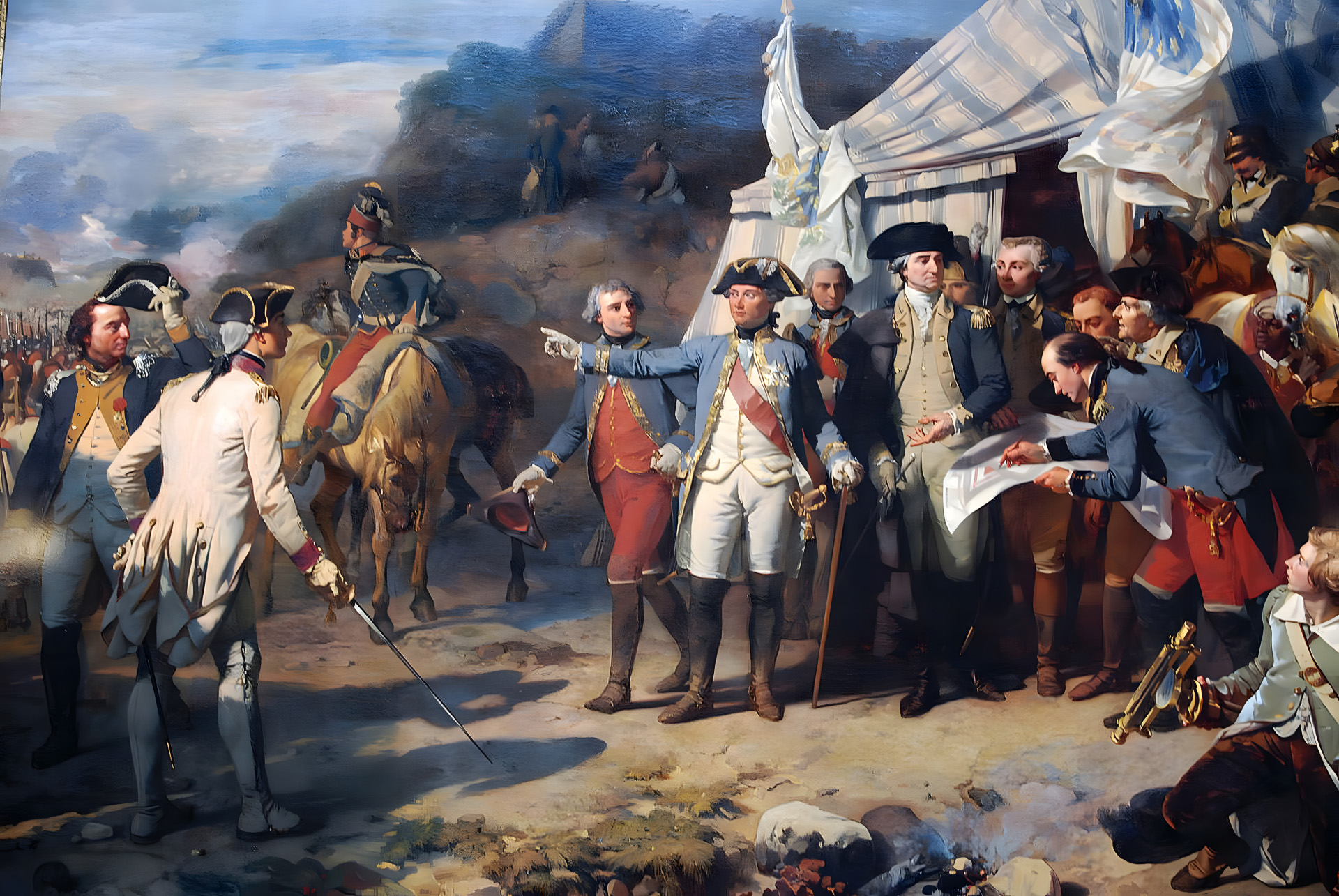
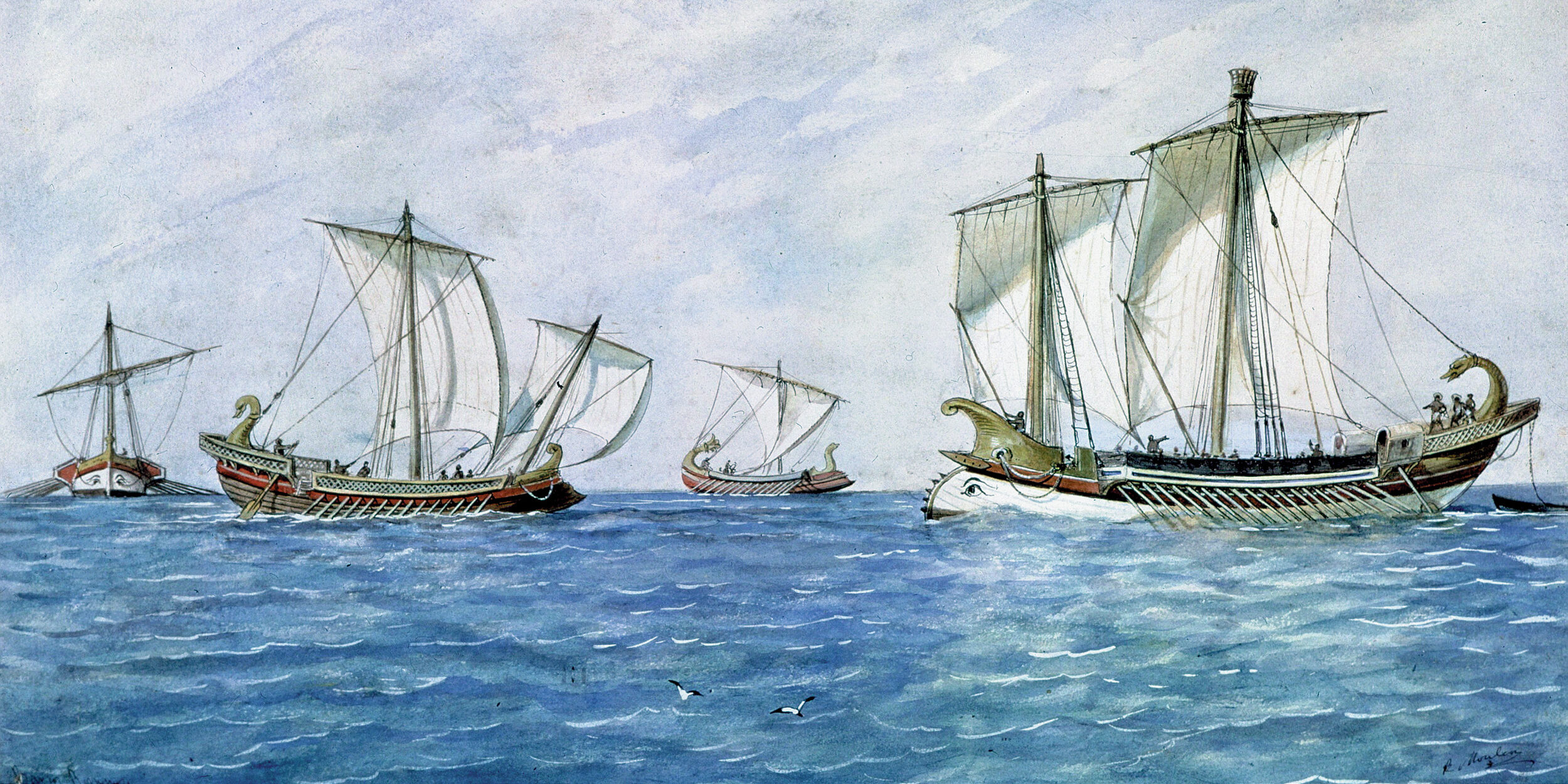
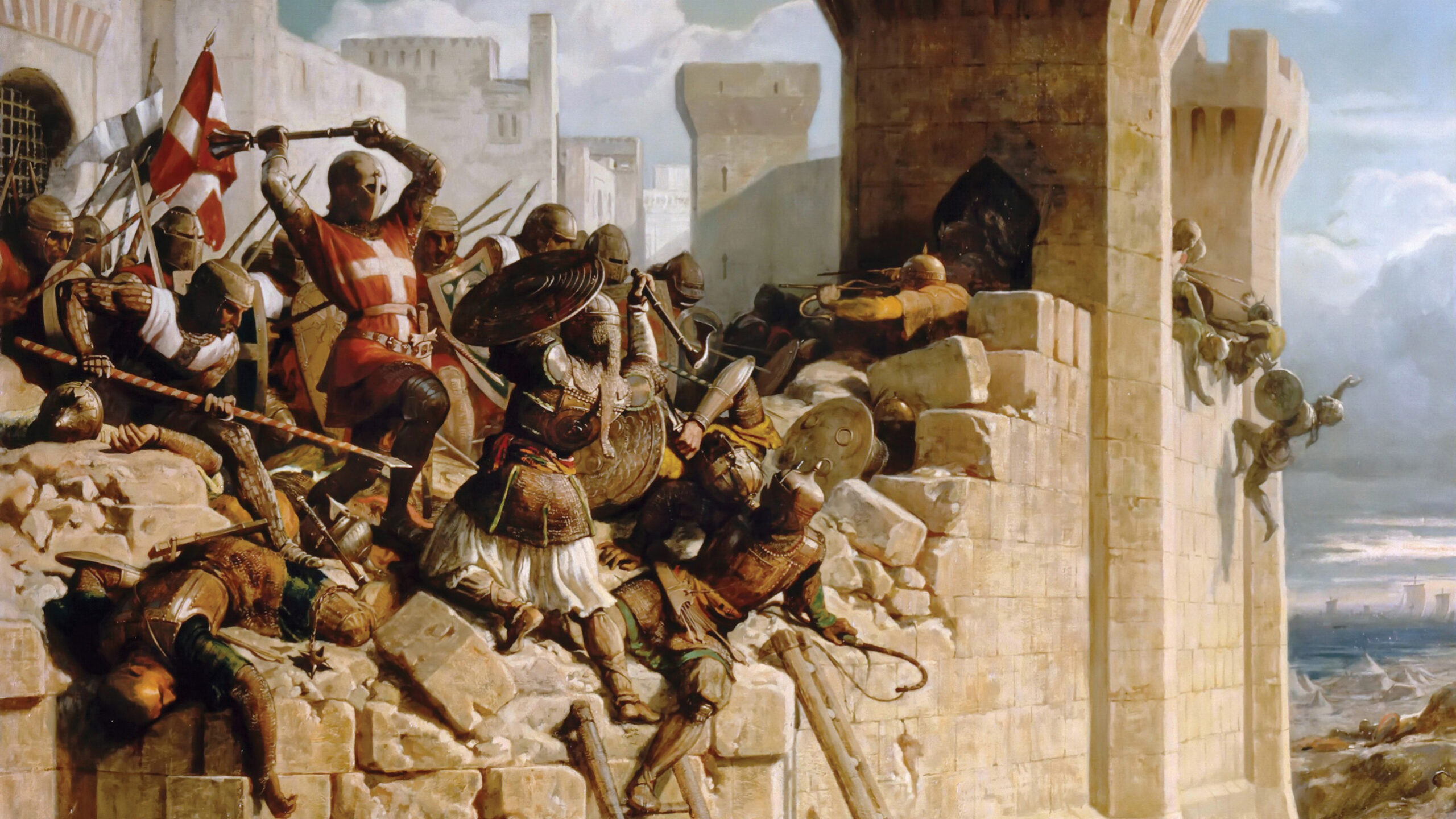
Join The Conversation
Comments
View All Comments